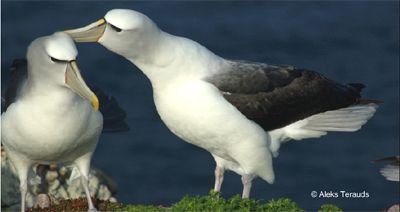Claire Runge (Landscape Ecology Group, University of Queensland, St Lucia, Australia) and colleagues have had an open-access paper accepted for the journal Conservation Letters that discusses how domestic legislation in federal government systems and international agreements need to be co-ordinated to improve the conservation of migratory species, including those listed by the Albatross and Petrel Agreement.
“Migratory movements of animals frequently span political borders and the need for international collaboration in the conservation of migratory species is well recognized. There is, however, less appreciation of the need for coordinated protection within nations. We explore consequences of multi-level governance for top-down implementation of international agreements, drawing on examples from Australia and with reference to the US and EU. Coherent implementation of legislation and policy for migratory species can be challenging in federal jurisdictions where environmental law making can be split across multiple levels of governance and local and federal priorities may not necessarily be aligned. As a result of these challenges, for example, two-thirds of Australian migratory birds remain unprotected under national legislation. In Australia and elsewhere, coordinated protection of migratory species can be implemented within the current framework of conservation law and policy by actions such as designating national migration areas, negotiating nationally-coordinated agreements or listings of migratory species and pursuing new bilateral agreements with key countries along migratory routes.”

Shy Albatrosses, an Australian migratory species; photograph by Aleks Terauds
With thanks to Eduardo Gallo-Cajiao.
Reference:
Runge, C.A., Gallo-Cajiao, E., Carey, M.J., Garnett, S.T., Fuller, R.A. & McCormack, P.C. 2017. Coordinating domestic legislation and international agreements to conserve migratory species: a case study from Australia. Conservation Letters. doi:10.1111/conl.12345.
John Cooper, ACAP Information Officer, 14 February 2017

 English
English  Français
Français  Español
Español